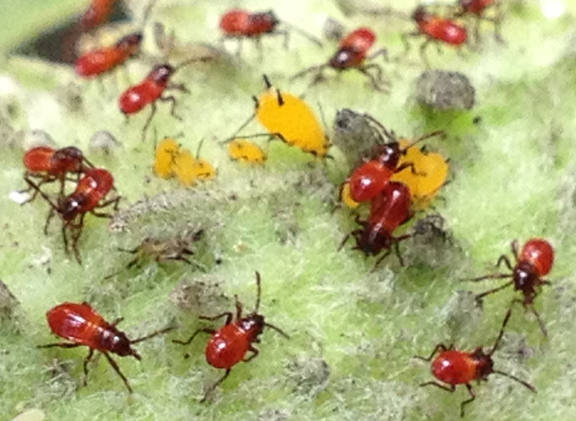Last week, Perrysburg’s trees were splashed with red as the trees’ internal chemistry saw that the days were getting shorter and it was time to prepare for winter by shutting down chlorophyl production and dropping leafs so winter snow and ice won’t break the branches.
The Fall colors jump out at you as you drive past but are hard to capture with the cell phone camera. At Niagara Falls I shot the same classic Canadian maple tree against the sun, with the sun from the side, and once more with the sun behind me. You decide which lighting is best?
Back home the mystery of the milkweed red bugs deepens. The following sequence of photos covers about 2 months from the time they first appeared, alongside yellow milkweed aphids on the full seed pods of the milkweeds I’d planted to attract monarch butterflies.
After a month or so I think black ants and ladybugs ate all the yellow aphids – none are left now. But the red bugs continually prospered and morphed. First they acquired stronger black dots.
Next two pale colored long, queen bee like variations appeared.
Now there are very regular looking box elder bugs among them.
All the time they were very conspicuously atop milk weed seed pods and yet no one ate them. Now it’s cooler at night so they hang out under the pods at night for shelter and come up on top looking for sunlight by day. I really wonder if they are all the same species?
I’ve since left the reds of Perrysburg and have driven south-east through sunset and the last red of the PA mountains.
I’m writing this in warm sunshine at Cape Hatteras, North Carolina where there are only green, storm sculpted low evergreen trees and shrubs among the wind swept sand dunes of the outer banks.










